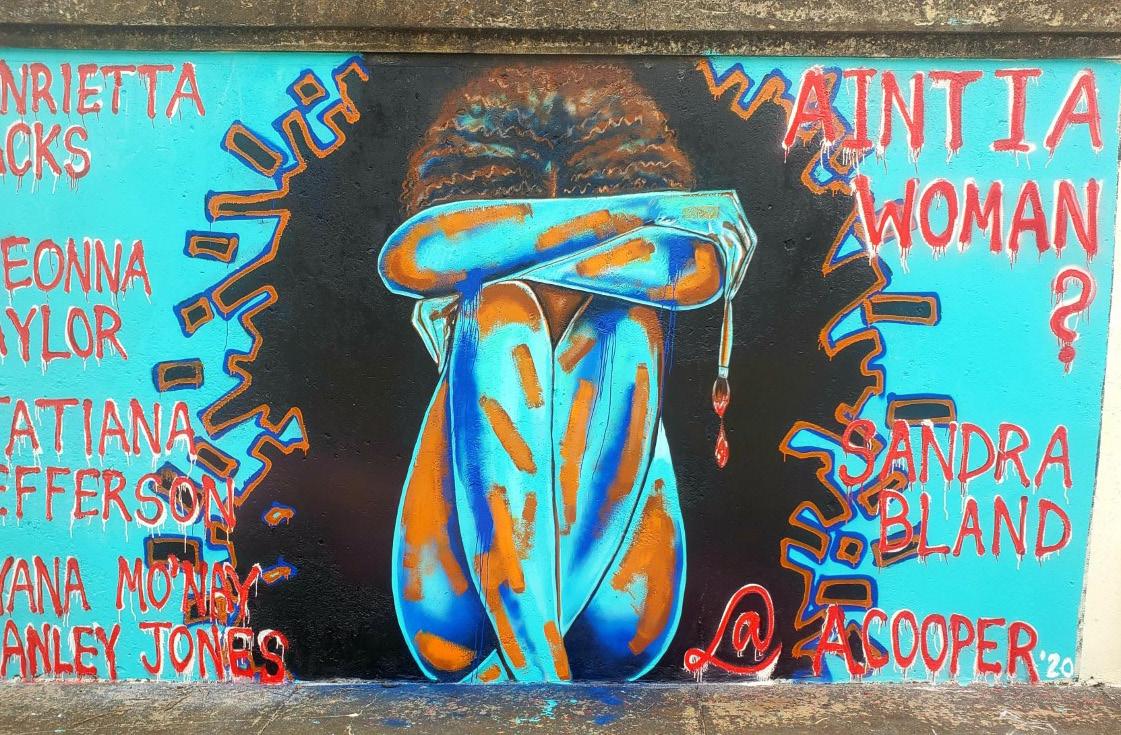
3 minute read
Struggles from a Black Female Artist
from The Issues Issue
by The Profile
Adaja Cooper| Guest Writer
Photos courtesy of Adaja Cooper
Advertisement
Editor’s Note: To support Adaja and her work, you can follow her on social media on Instagram and Twitter @adajacooper and visit her website adajacooperstudio.com You can also find more information about the 7th Street Mural Project on Facebook
Two years ago, I would have laughed at the idea of considering myself as an ‘artist,’ or even considering a major in art. That’s not because I don’t have respect for the profession (I definitely do), but because I didn’t think I would stick with art; I saw it more as a side hobby. My family and I pictured myself attending medical school and becoming a doctor. But as of right now, art takes up a significant part of my daily life.
Growing up, I always had a sketchbook and pencil in hand. I doodled so much that teachers would make me redo my homework on ‘clean’ sheets of paper. It wasn’t until my last couple of years in high school when I started taking art more seriously. I used it as an outlet for emotions, energy bursts or to explain a feeling that I couldn’t put into words. It felt less like an assignment and more of a tool for comfort. I have learned not to use it as my only source of release, but as an option.
I occasionally get critiques about my art, specifically the subject matter and the assumption that I only paint Black people. It is almost always said with an offended or curious tone of voice. That assumption has always puzzled me, and it has affected my identity as an artist. Do I paint the things I paint because I want to or because I feel obligated? Am I an artist or a Black artist… or an artist that happens to be Black? It is nearly impossible for me to create my art without relating it to myself and my experience. That is where some of my inspiration comes from – using my emotions to help guide me. Art has become a part of my identity, and as a result, my identity has integrated its way into my art.
I have used my art to capture the joy and beauty of the Black experience and as a tool to give voice to Black historical figures. I typically work on canvases, but in mid-September, I had the opportunity to paint a

mural. It was part of the 7th Street Mural Project where different artists from around the state use the mural as a way to send a message, usually around social justice. I painted my mural inspired by the Sojourner Truth speech, “Ain’t I A Woman?” and made it a Black Feminism piece. Included in the mural were names of Black women who were victims of the medical system and police brutality, like Henrietta Lacks and Breonna Taylor. After it was finished, I felt so emotional about the meaning behind the mural, and I was overwhelmed by the stories behind the names on the wall.
Not even a week went by, and someone completely covered the mural in paint – twice. I was devastated. It was hard for me to hold back tears even days after I found out. Sadly, I anticipated my piece being vandalized, but I never expected it to be so extreme. Fortunately, the mural was scrubbed clean, and I was able to repaint parts while keeping most of the original work. It was very difficult to not take the vandalism personally. I saw it instead as an attack on the meaning behind the mural. The attempts to silence my mural only served as another example of how this country has treated Black women and the stories of our oppression.
Art has the ability to take messages that I can’t explain with words and have them shout from my canvases. It has helped to give me a voice when I am too emotional to speak. I am so thankful that my art speaks to others as well, and that for all the support my community has shown. With the state of our nation, and the future of the world in our hands, I believe that it is important to stand up for what you believe in, even if people are trying to silence you.







